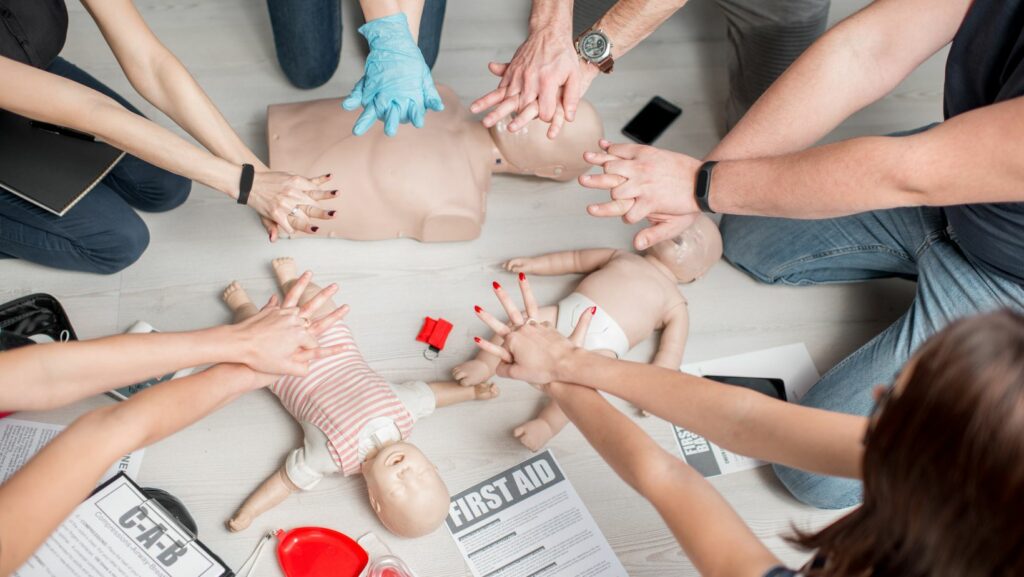Red Cross CPR Test
The Red Cross CPR test is a standardized evaluation that assesses an individual’s knowledge and skills in performing cardiopulmonary resuscitation (CPR). It is designed to ensure that individuals are adequately trained to respond to cardiac emergencies and provide life-saving interventions.
During the Red Cross CPR test, participants are evaluated on various components of CPR, including chest compressions and rescue breaths. The test assesses both the theoretical understanding of CPR principles and the practical application of those skills.
The Red Cross CPR test typically includes the following components:
1. Written Exam: Participants are required to demonstrate their knowledge of CPR principles, including the correct sequence of steps, the appropriate compression rate and depth, and the correct positioning for rescue breaths. This written exam assesses the participant’s understanding of the theoretical aspects of CPR.
2. Skills Demonstration: Participants are also required to demonstrate their practical skills in performing CPR. This includes mastering chest compressions to the correct depth and rate, ensuring proper hand placement and technique, and delivering effective rescue breaths.
3. Scenario-based Assessments: In some cases, participants may be presented with simulated cardiac emergency scenarios, where they are expected to apply their CPR skills in real-life situations. This allows evaluators to assess their ability to respond quickly, efficiently, and effectively in high-pressure situations.
By successfully completing the Red Cross CPR test, individuals demonstrate their competence in responding to cardiac emergencies and providing immediate care until professional medical help arrives.
This certification is widely recognized and accepted by employers, organizations, and educational institutions. It is an essential qualification for many healthcare professionals, lifeguards, first responders, and individuals who want to be prepared to handle emergency situations.
Overall, the Red Cross CPR test plays a crucial role in promoting public safety by ensuring that individuals possess the necessary skills and knowledge to perform CPR effectively and potentially save lives.

Importance of the Red Cross CPR Test
As an expert in CPR training, I understand the vital importance of the Red Cross CPR test. This standardized evaluation serves as a crucial measure of an individual’s knowledge and skills in performing cardiopulmonary resuscitation (CPR).
Here are a few reasons why the Red Cross CPR test is so important:
1. Ensuring Competence: The Red Cross CPR test evaluates both theoretical understanding and practical application of CPR principles, including chest compressions and rescue breaths. Passing this test demonstrates that an individual is competent in responding to cardiac emergencies.
2. Recognition and Acceptance: The Red Cross CPR certification is widely recognized and accepted by employers, organizations, and educational institutions. Holding this certification can enhance job prospects and open doors to new opportunities in healthcare, teaching, and other fields.
3. Promoting Public Safety: Responding effectively to cardiac emergencies can be a matter of life or death. By ensuring individuals possess the necessary CPR skills and knowledge, the Red Cross CPR test contributes to public safety by empowering more people to respond effectively in emergency situations.
4. Standardized Evaluation: The Red Cross CPR test provides a consistent and standardized evaluation process, ensuring that all individuals who pass the test have met the same set of criteria. This helps maintain a high level of quality and reliability in CPR training and certification processes.
5. Continued Learning and Improvement: The Red Cross CPR test encourages individuals to constantly improve their CPR skills by staying up-to-date with the latest guidelines and best practices. This commitment to ongoing learning helps healthcare professionals and laypersons alike provide the highest level of care to those in need.
The Red Cross CPR test is of utmost importance for individuals seeking to demonstrate their competence in performing CPR. By ensuring standardized evaluation and promoting public safety, this test plays a crucial role in equipping individuals with the skills and knowledge necessary to potentially save lives.
Note: The following table provides the recommended rate and depth for chest compressions during CPR:
| Parameter | Recommendation |
| — | — |
| Compression depth | At least 2 inches (5 cm) for adults |
| Compression rate | 100-120 compressions per minute for adults |
Conclusion
Mastering chest compressions and demonstrating effective rescue breaths are crucial skills for passing the Red Cross CPR test. By following the tips provided in this article, you can excel in rescue breaths during the test. Remember to focus on proper technique, maintain a steady flow, deliver an adequate volume of air, and avoid excessive force.
These skills are not only essential for passing the test but also for effectively responding to cardiac emergencies in real-life situations.
Additionally, proficiency in using an automated external defibrillator (AED) is another important component of the Red Cross CPR test. Make sure to familiarize yourself with the operation and functionality of an AED to demonstrate your competency during the test.


More Stories
Ranking The Most Anticipated Upcoming Ps5 Games of 2024 and Beyond: New Playstation 5 Release Date
Extreme Run 3D: A Thrilling Endless Runner Experience
The Most Innovative Game Mechanics of the Last Decade